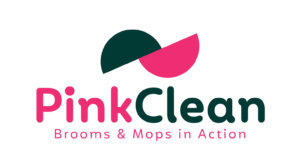What is a Cleaning Schedule in a Commercial Kitchen?

In the bustling environment of a commercial kitchen, maintaining cleanliness isn’t just good practice; it’s a legal requirement and a fundamental aspect of running a successful food service establishment. A cleaning schedule is a structured plan that outlines the tasks and frequency at which various areas and equipment within a commercial kitchen should be cleaned. From countertops to cooking appliances, refrigerators to floors, every surface and item must be regularly sanitized to ensure food safety, uphold hygiene standards, and create a welcoming environment for both customers and staff.
Importance of Maintaining a Clean Commercial Kitchen
In a commercial kitchen, cleanliness is paramount for several reasons. First and foremost, it directly impacts food safety and hygiene. Cross-contamination and the spread of pathogens can occur rapidly in a kitchen environment, leading to foodborne illnesses and potentially damaging the reputation of the establishment. Additionally, maintaining a clean kitchen enhances operational efficiency, prolongs the lifespan of equipment, and contributes to a positive customer experience.
Components of a Cleaning Schedule
A comprehensive cleaning schedule for a commercial kitchen encompasses daily, weekly, and monthly tasks.
Daily Cleaning Tasks
- Wiping down countertops and prep surfaces
- Sanitizing cooking equipment and utensils
- Cleaning floors and drains
- Emptying and sanitizing trash bins
Weekly Cleaning Tasks
- Deep cleaning ovens, grills, and fryers
- Descaling coffee machines and beverage dispensers
- Cleaning refrigerator interiors and exteriors
- Sanitizing storage shelves and racks
Monthly Cleaning Tasks
- Cleaning ventilation hoods and exhaust systems
- Defrosting and cleaning freezers
- Inspecting and cleaning behind and under equipment
- Cleaning walls and ceilings
Benefits of Implementing a Cleaning Schedule
Implementing a structured cleaning schedule offers numerous benefits to commercial kitchens:
- Compliance with Health and Safety Regulations: Adhering to cleaning standards ensures compliance with local health codes and regulations.
- Preventing Contamination and Foodborne Illnesses: Regular cleaning reduces the risk of cross-contamination and foodborne illnesses, safeguarding both customers and staff.
- Enhancing Operational Efficiency: A clean and organized kitchen facilitates smooth workflow and enhances operational efficiency.
- Ensuring a Positive Customer Experience: A clean kitchen reflects positively on the overall dining experience, encouraging customer satisfaction and loyalty.
Steps to Create an Effective Cleaning Schedule
Creating an effective cleaning schedule requires careful planning and consideration:
- Assessing the Kitchen Layout and Equipment: Identify high-traffic areas and critical points that require regular cleaning.
- Assigning Responsibilities and Timeframes: Clearly define tasks and designate responsible staff members for each cleaning activity.
- Choosing Appropriate Cleaning Products and Tools: Select cleaning products and tools suitable for specific surfaces and equipment.
- Training Staff on Proper Cleaning Procedures: Provide comprehensive training to staff on proper cleaning techniques and safety protocols.
Conclusion: The Impact of a Cleaning Schedule on Commercial Kitchen Operations
In conclusion, a deep cleaning schedule is an indispensable tool for maintaining cleanliness, upholding hygiene standards, and ensuring the smooth operation of a commercial kitchen. By implementing a structured cleaning regimen, food service establishments can mitigate risks, comply with regulations, and create a safe and welcoming environment for both customers and staff.
Pinkclean is the best choice for commercial cleaning. Book now for a free quote.
